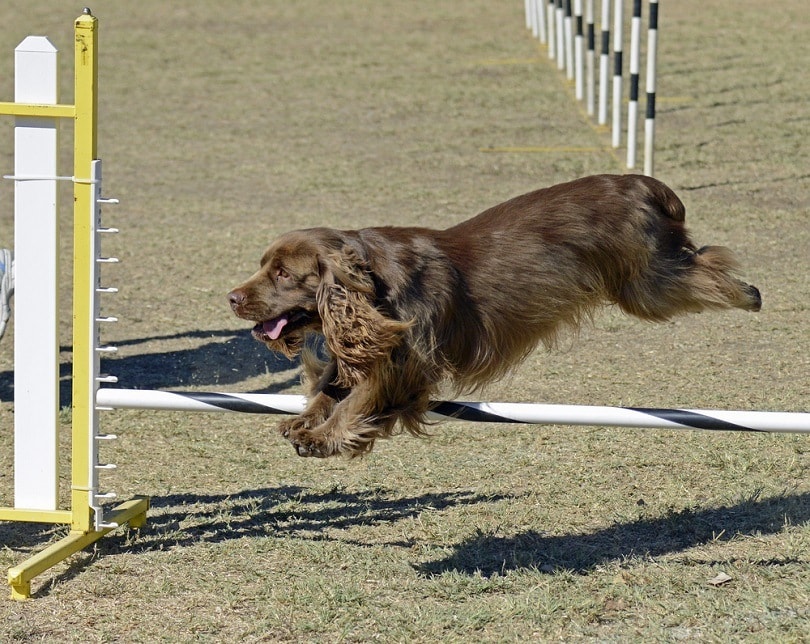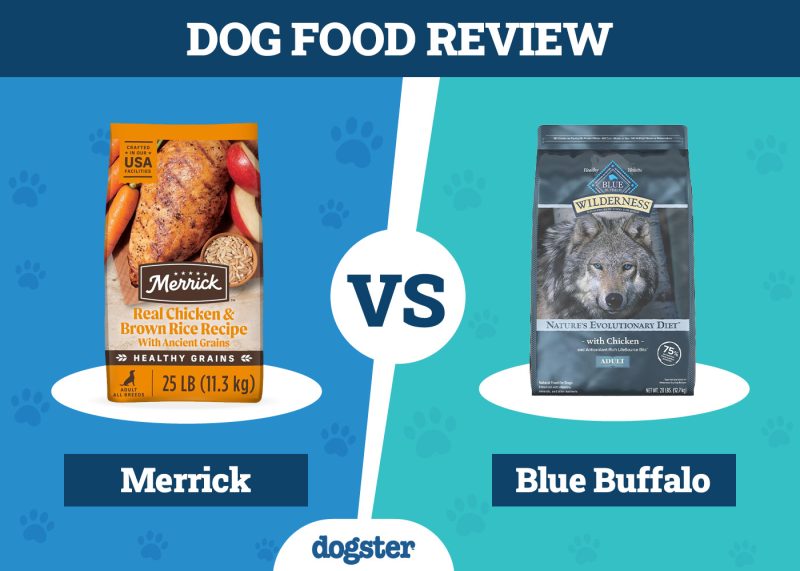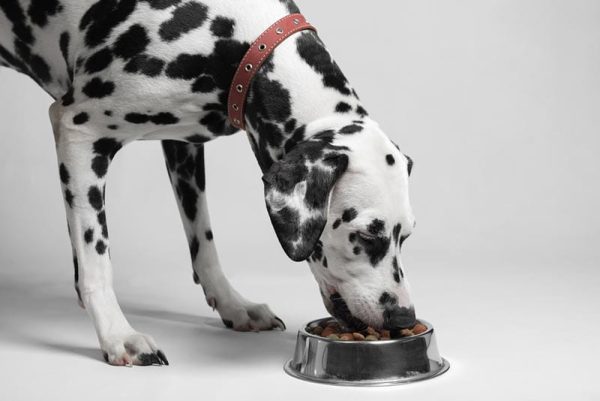In this article
View 8 More +The Sussex Spaniel is an old British dog breed with a medium-length, golden liver-colored coat; short stature; and deep chest. Listed as a vulnerable native breed by The Kennel Club, this is a rare spaniel whose existence breed enthusiasts have fought long and hard to maintain.
Only a small Sussex Spaniel gene pool remains in the UK, but fortunately, the breed continues to survive, and a small number of these dogs can also be found in the United States. Read on to learn more about the Sussex Spaniel’s origins, characteristics, and care.
Breed Overview
Height:
13–15 inches
Weight:
35–45 pounds
Lifespan:
13–15 years
Colors:
Golden liver
Suitable for:
Any loving family
Temperament:
Cheerful, gentle, friendly, affectionate, loyal
The Sussex Spaniel is distinguished by his unique appearance, namely the low, long body with a prominent chest; strong head; and rich, flowing, golden liver-colored coat. A true English gentleman or lady, the Sussex Spaniel is also known for possessing an even temperament and infectious merriness of spirit. They make wonderful companions when raised in a caring, loving environment.
Sussex Spaniel Characteristics

Sussex Spaniel Puppies
Sussex Spaniel puppies are pretty rare even in the UK, their native land, which is due in part to breeding difficulties (more on this in the health section), but there are some breeders who specialize in producing them.
There’s no guarantee you’ll get a puppy quickly as there may be a waiting list given how uncommon these dogs are, but if you’re determined, reach out to a breeder with an excellent reputation. Dedicated breeders screen their breeding dogs for health conditions and have a high regard for the welfare of both the breeding dogs and the puppies they produce.
If you’re considering adoption, the chances of finding a Sussex Spaniel are slim because they’re so rare, but there are plenty of other spaniel types in need of a new home. Some organizations even specialize in rehoming spaniels specifically.

Sussex Spaniel Origin & History
The Sussex Spaniel can be traced back to the country estate once known as Rose Hill, Sussex. Today, the area is called Brightling Park. The breed was founded by Mr. Augustus Elliott Fuller in the 1700s or 1800s (sources differ) and developed to work as bird hunters on Fuller’s estate.
Their low bodies and short legs helped them effectively navigate tricky terrain, and they would alert their human companions with both barking and “babbling” sounds, as the American Kennel Club puts it.

Temperament & Intelligence of the Sussex Spaniel
Sussex Spaniels are very smart dogs that form close-knit bonds with their favorite people and consider themselves very much part of the family, but this bond is based on mutual respect—the Sussex does not forget harshness or mistreatment. They have loyalty and love in abundance and are happy to share it freely as long as you’re kind to this sensitive, intuitive dog in return.
A strong work drive is another prominent Sussex Spaniel trait, and they like exploring and having little jobs to do but avoid too much exercise in the first 18 months or so as this can be damaging to the growth process.
Are These Dogs Good for Families? 👪
Yes, Sussex Spaniels are devoted family dogs if you raise them right and approach training, socialization, and care with sensitivity and positivity. It’s important to be ready to truly commit to the Sussex’s socialization to ensure they develop into happy, confident, and well-mannered canine citizens, and this—as with any breed of dog—takes time and consistency.
Always supervise children around dogs and model gentle interactions with the dog.

Does This Breed Get Along with Other Pets? 🐶 😽
If socialized under close supervision with other dogs and cats in the household, the Sussex Spaniel can live with other animals without issue. They have moderate energy levels but are often very playful, so may get on well with equally merry, playful dogs and tolerant, easygoing cats.
Be careful around small pets, though, particularly rodents or birds—your Sussex may give in to their chasing instincts.

Things to Know When Owning a Sussex Spaniel:
Food & Diet Requirements 🦴
A high-quality complete and balanced diet in the right age and weight range is essential for supporting your Sussex Spaniel’s growth and development in all areas as well as helping to keep their soft, feathery coat in optimal condition.
It’s also necessary to weigh out your dog’s daily food intake according to the guidelines on the label or your vet’s advice to keep obesity at bay, a condition that puts immense pressure on the joints and can lead to a number of other health conditions, including heart disease.
In addition to splitting the food rations into two or more meals per day, it might be a good idea to get a slow feeder bowl for your Sussex Spaniel as this breed is susceptible to bloating, which can be caused by eating large meals too quickly.
Exercise 🐕
As a slow-growing breed, engaging in strenuous activity too soon can damage the bones and joints, so you’ll need to wait until around the 18-month mark before your dog can be exercised at a normal adult dog pace. Puppies can get exercise from regular playtime and short, gentle walks—as long as they don’t overdo it, they’ll be fine.
Once they’re old enough to exercise fully, they can engage in more activities, including agility.
Training 🎾
Sussex Spaniels are intelligent and will happily work with you, but they do have a stubborn streak and will dig their heels in if they find training sessions dull or if you’re harsh with them. Your Sussex prefers a kind, positive tone and lots of encouragement and praise for their achievements, and if you consistently do this and make clear what’s expected of them with plenty of practice, they’ll soon pick up the basics and develop into well-mannered citizens.

Grooming ✂️
The Sussex Spaniel is a moderate shedder with a medium-length double coat. They need to be brushed and combed through every day or at least every other day to maintain the coat, and the hair around the feet must be trimmed because they’ll slip on it otherwise.
If you have your Sussex Spaniel neutered, his coat will be more challenging to groom because it takes on a fuzzier texture than that of unneutered Sussex Spaniels. In addition to brushing and occasional bathing, nail trims, tooth brushing, and ear checks are important aspects of caring for your dog.
Health and Conditions 🏥
Sussex Spaniels can live long, healthy lives, but there are some issues and conditions specific to the breed that you need to be aware of. For one thing, breeding difficulties are more common in Sussex Spaniels than many other breeds, and it’s often necessary for a C-section to be performed. Extra care must be taken with puppies up to around 2 weeks old because they’re especially fragile during this period.
Bloat is one of the most serious conditions that has been linked to Sussex Spaniels, as it has to other deep-chested breeds. Bloat can cause the gut to twist, a fatal situation if treatment is not promptly sought, which is why it’s so important to be aware of it.
You can reduce the risk of bloat by using slow feeder bowls, splitting food into several small meals to be fed at different times of the day, and avoiding exercising your dog right after they’ve eaten. Other potential conditions include:
- Mild ear irritation that receives treatment
- Bloat (GDV)
- Cancer (especially in older dogs)
- Ear issues (polyps, infections, etc.)
Male vs Female
One of the differences between male and female Sussex Spaniels is that females are prone to birthing complications. In addition, when not spayed, females go into heat, which can cause behavioral changes including excessive clinginess, frequent urination, and determination to roam.
Males also experience hormone-related behavioral changes when unneutered, including frustration, aggression toward other males, not obeying commands, and generally becoming difficult to manage. This happens when they sense a female in heat and are preparing to mate.

3 Little-Known Facts About the Sussex Spaniel
1. The Sussex Spaniel Has Faced Extinction
By the end of WWII, there were only seven Sussex Spaniels left. A breeder named Joy Freer saved the breed from extinction by continuing to breed the line of dogs over the course of her life.
2. Their Coloring Is Unique
Though there are various brownish shades across different breeds (tan, liver, chocolate, etc.), you won’t find the golden liver coloring in any breed other than the Sussex Spaniel.
3. The Success Received Early Recognition
The British breed was entered into the American Kennel Club Stud Book in 1884, one of the first ten breeds to receive the honor. They were officially recognized in 1878 and placed in the “sporting group” category.

Final Thoughts
The Sussex Spaniel is something of a unicorn in the dog world: difficult to breed, rarely found, and with a completely unique coat color to boot. Breed enthusiasts have worked very hard to keep the Sussex alive, and it is thanks to their efforts that, though still very uncommon, these dogs continue with an ever-merry spirit.
Featured Image Credit: Vera Reva, Shutterstock


















